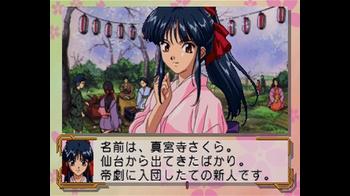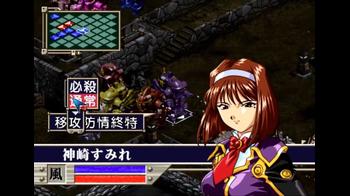Sakura Wars - Linking the Past to the Present
Beloved in Japan throughout the late 90s and well into the first decade of the millennium, the Sakura Wars series took the country by storm. The resounding success of the first game’s release on the Saturn in 1996 surprised everyone, even its developers. It was a game release that exploded into a full-on franchise within the following years, filled with numerous game sequels, spin-offs, stage plays, anime adaptations, and so on in no time. Sakura Wars was undeniably a tour de force back in the day in one part of the world. The series certainly ranked among some of the most recognizable RPG series in Japan at the time, alongside Final Fantasy, Dragon Quest, Fire Emblem, Pokémon, Super Robot Wars, and such.
I didn’t get into the series until well after the first two games were re-released on the Dreamcast, but I understood why people loved it so much. The games are technologically ambitious from top-to-bottom in their presentation; there’s a clear cut vision that’s conveyed elegantly upon picking up the controller. The developers’ intentions are clear right from the get-go - “what if a video game was an anime episode, but the player was in control of the main character?” From the iconic opening theme song to the bombastic next episode previews, playing Sakura Wars is like seeing an exciting anime episode unfolding.
The original Sakura Wars bridged the gap of the visual novel and adventure genres together seamlessly and sprinkled in some strategy RPG goodness to keep players engaged when combat scenarios arose. You took control of Ichiro Ogami, the would-be Captain of the Imperial Combat Revue’s Flower Division. They’re a secret elite task force that defended Tokyo from demons under the guise of a stage theater group to the public in the Grand Imperial Theater. Also, they piloted the Kobu, mechs fueled by steam and spiritual power.
It was a monumental game that genuinely felt like the next step in contemporary visual novels as the PC-98 era was already in its twilight years. Not only did it include full hand-drawn anime clips for important scenes, but the first Sakura Wars game also contained voice acting for a handful of interactions that had their mouth flaps fully in-sync with the spoken dialogue. This was particularly impactful because the nature of the game called for voice actresses that could not only fulfill a standard acting role, but could also perform and give life to stage songs. Looking back on it now, it probably seems like a minor detail but it meant a lot at the time to fully immerse players into the experience.
A large part of the Sakura Wars series identity lies in its prevalent use of timed dialogue choices, known as the Live Interactive Picture System (LIPS). As conversations with characters go on, Ichiro will often have to think of what to say next and you’re usually given only a couple of seconds to select a response - should you choose to respond at all. There are even unique responses to staying silent. It provided a distinct sense of urgency to think fast on what kind of character I wanted Ichiro to be to these people.
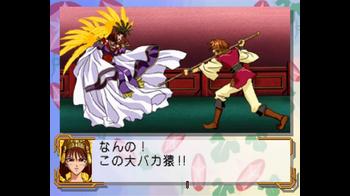
In my opinion, Sakura Wars’ categorization as an RPG has more to do with how a player wants the main character to be seen and received by the game’s cast more so than its barebones battle system. Sure, the first two entries do have a grid-based strategy RPG layer, but it is not the main focus. This is true for every mainline Sakura Wars game, including the new one; the visual novel and adventure aspects are the highlights, while the battle portions are a means to an end. They’re not necessarily poor, but they’re a relatively small part of the overall games.
I always flip-flop on whether the first Sakura Wars or Sakura Wars 2: Thou Shalt Not Die is my second favorite in the series. The former obviously has the history behind it, but its sequel refined it in meaningful ways. Its main story was much more compelling and the base LIPS mechanic was expanded upon to include hidden options that unveiled themselves when the timer to respond reached halfway and timed adventure sequences where you looked around a room as a timer was ticking down. Battles also received a minor facelift with a character’s bust in view on their turn rather than a small portrait for their head like in the first game. Above all, Sakura Wars 2’s novel feature was transferring your save file from the first game to unlock additional scenes with the characters you’ve built the most trust with. Once again, it was a big deal at the time of its original Saturn release - somewhat less so by the time I played it on the Dreamcast, but still very cool to see.
The first two Sakura Wars wouldn’t be as legendary, memorable, or influential without its distinct setting and a strong cast. It revels in its retro-futuristic vision of 1920s Japan in the Taisho era, where society has had western influences and touches permeate throughout its culture, along with a steam-powered society. No other game has quite the flair or flavor to their world in the way that Sakura Wars constructs it.
Throughout the years, dating sims and visual novels have continually been a tricky thing to explain to people because there’s a lot of preconceived notions behind the terms themselves. Many see them as pornographic video games; merely excuses to slap on some sort of story before players see the sex scenes. I don’t blame people for thinking this, especially because Steam has given a much, much bigger platform to this genre and has made it frustratingly difficult to determine the ones that are worth reading from the massive drivel of games looking to make a quick buck solely off of the male libido. Thus, I can understand why a lot of people have chosen to generalize them and it’s not a problem with an easy solution that will change people’s minds overnight.
I suppose what I’m trying to get at is that Sakura Wars is, and has always been, an interactive visual novel at its core with light dating sim elements. The series tends to strike a fine balance with how it chooses to respect the decorum of the girls’ characterizations. Sure, I’ll admit that not everything is sunshine and rainbows in this area because they do sometimes rely on tropes and stereotypes for them. Kanna, for instance, is a muscular tomboy martial artist that has a deep fear of snakes and Orihime constantly speaks with a heavy accent because she’s part-Italian. As Ichiro gets to know them more, they do become more fleshed out characters but how they’re initially presented, among some others, is one of the series’s quirks I remain mixed about.
My favorite game in the entire Sakura Wars series came with Sakura Wars 3: Is Paris Burning?, the first new mainline game on the Dreamcast. Ichiro transfers to the Paris Combat Revue and meets a brand-new diverse cast of lovable characters. It’s a fantastic game that shook up the entire series for me brilliantly. Since it was set in Paris this time, the series took a break from the Grand Imperial Theater into the mesmerizing Le Chatte Noir; the Paris Combat Revue were not actors that performed stage plays, but rather a group of entertainers for a cabaret that put on variety shows. The series thoughtfully switched up its tried and true formula to match the setting.
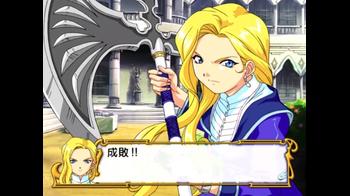
Sakura Wars 3 did more than that though. The series did away with its isometric strategy RPG roots with the console generational leap with its new battle system, Active & Realtime Machine System (ARMS). Think of this as an early prototype of Valkyria Chronicles; players could move mechs around freely in a 3D space but the further you moved, the more action points would be expended. Attacking, defending, healing, and other commands were reliant on the action point meter too. It was an awesome step forward for the series and one that it would stick with until the new upcoming entry for the PS4.
Other significant enhancements that came with the third installment included the analog LIPS options and an explorable hub world to get to one part of town to the other. LIPS, up to this point, was all about choosing different sets of responses for different outcomes. With the analog LIPS, you were given one option and a meter for how strongly you wanted to say it. Maybe some characters would prefer for you to say something more loudly or others would rather you keep it more on the down-low. Meanwhile, Sakura Wars 3 also allowed players to roam around Montmartre, on top of Le Chatte Noir, to meet up with characters at different locales all around town.
As much as I loved Sakura Wars 3, it marked the beginning of the end for my love of the series.
The next couple of games, Sakura Wars 4: Fall in Love, Maidens and Sakura Wars V: So Long, My Love, didn’t do much for me. Sakura Wars 4 was hastily developed on a strict timetable to release before the Dreamcast was finally phased out completely. It functioned more as a fandisc, combining the Imperial Combat Revue and Paris Combat Revue casts together making for a lot of neat character interactions between the previous casts. There was a shallow story thrown together to give the game an excuse for the two combat groups to work together and give Ichiro an overpowered mech to save the day. Sakura Wars 4 leaned heavily into fanservice and was the final entry where Ichiro was the main protagonist. I can see why it turned out the way it did, but it lacked a lot of what I liked about Sakura Wars and despite the overall cast size being bigger than ever, it was remarkably shorter than previous games. One unique thing it did do was read a player’s previous save files and depending on which heroines you ended up with from the Imperial Combat Revue and Paris Combat Revue previously, it’d put them in a love triangle situation in Sakura Wars 4. Again, it wasn’t what I really wanted from a Sakura Wars game.
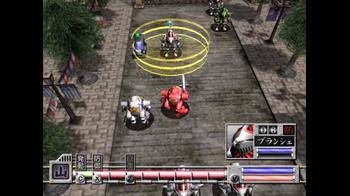
This feeling continued on with Sakura Wars V which was, unfortunately, the only Sakura Wars game, up until this point, to receive an official English release. It was the first new mainline Sakura Wars game that wasn’t developed on Sega hardware for obvious reasons. With Sega’s shift to a software-based company after the Dreamcast, Sakura Wars V was developed for the PS2 but it also received a re-release on the Wii as well. The first Sakura Wars game also received a PS2 remake that added the ARMS combat system that was introduced in Sakura Wars 3 and new quicktime event segments.
Sakura Wars V starred Ichiro’s nephew, Shinjiro Taiga, on his overseas assignment to lead the New York Combat Revue. It tried to capture a similar essence that Sakura Wars 3 had, yet it fell short for me. The new cast was, once again, certainly diverse and now players could fully run around 3D spaces in this entry instead of navigating an overhead hub interface to get around. I think the key missing aspect for me was providing a warm sense of time and place in its atmosphere. It takes quite a bit of time for Shinjiro to even earn the slightest bit of respect from most of Sakura Wars V’s characters, and his relatively weak demeanor compounds on this problem. Earlier Sakura Wars entries featured characters that were a bit more grounded while Sakura Wars V swung more on the comical side, dialing up stereotypes and whatnot. Sakura Wars V’s combat system still used ARMS, but the New York Combat Revue’s new STARs (Super Telekinetic Assault Robots) mechs had the ability to transform into jets Macross-style and take the battle into the air. It didn’t change too much though. I think Sakura Wars V was the worst game in the series and it’s no surprise that the series went into a long-dormant slumber after it.
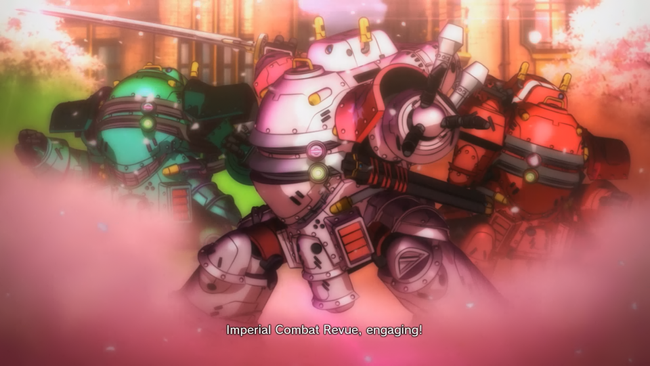
I didn’t mean for this piece to be a history lesson, but here we are. Fast-forward to the year 2020 and we’re just a few weeks out from the full English release of a brand-new Sakura Wars game. This time it didn’t take five years to release thankfully; Sakura Wars V originally came to Japan in July 2005 and didn’t see the light of day overseas until March 2010. The newest one has been out in Japan for a little over 4 months now under the name Shin Sakura Taisen (New Sakura Wars, if translated literally) and will be released in the west simply as Sakura Wars. To avoid confusion over the original and this soft reboot’s naming conventions, I’ll refer to it as Sakura Wars (2019) to save all of us the headache of distinguishing which is what. I’ve been playing a lot of the English release of Sakura Wars (2019) lately and wanted to provide some insight into my experience with the series. Perhaps it’s an extended foreword to my upcoming review of it too, I suppose.
Although Sakura Wars (2019) is considered a reboot of the series, it’s still a sequel to the original games that takes place far into the future. The game starts well over a decade after the previous entries - 13 years after Sakura Wars 4 and 12 years after Sakura Wars V. Players are introduced to a brand-new protagonist that’s not related to Ichiro Ogami at all (a series first in the main games!), Seijuro Kamiyama. His task is leading the new Imperial Combat Revue, the next generation of combat maidens who have replaced the cast of the first two Sakura Wars games. Not everything is unfamiliar though; the General Manager at the series’s familiar Grand Imperial Theater setting is none other than Sumire Kanzaki, one of the original girls in the first Sakura Wars game.
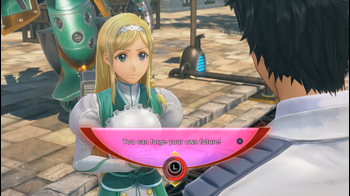
The more things change, the more things stay the same. Sakura Wars (2019) is a new gateway for newcomers into the series and one that stays true to the spirit of the original classics. Even if you’ve never played one before, there’s a certain reverent vibe it exudes to communicate that there’s a history to the place you’re inhabiting. Much of its music hearkens back to the original Sakura Wars and its main opening theme song is a callback to it.
Of course, the immediately noticeable enhancement from the get-go in Sakura Wars (2019) is the technological leap in visuals after all these years. The Grand Imperial Theater is fully explorable from the ground level, instead of an overhead view, and everything is rendered on a 1:1 scale. It foregoes static 2D interactions and fully commits to all interactions being in 3DCG which does wonders to animating everyone’s body language and facial expressions. Sakura Wars (2019) has put aside its strategy RPG roots and the ARMS mechanic for battles as well; instead, it’s now an action RPG that takes a few cues from the Dynasty Warriors series and Bayonetta’s Witch Time feature that slows down time briefly upon dodging right before an enemy attack hits you.
No Sakura Wars game is complete without LIPS though and Sakura Wars (2019) has a lot of it. Expect many of the series’ iterations of LIPs in Sakura Wars (2019) from the standard set of responses, timed event adventure segments, and analog LIPS to make a return. The only LIPS mechanic that doesn’t make a return are the hidden options first introduced in Sakura Wars 2 that revealed themselves shortly after the timer has started ticking down.
There’s a lot more to the game I want to share, but I figure that’s best saved for my final review of Sakura Wars (2019). I’m enjoying it a lot so far and it’s done a lot to capture the spirit of the entries I really liked. Sakura Wars (2019) is what The Force Awakens was to Star Wars for Sakura Wars, but in a good way. I genuinely mean that.
